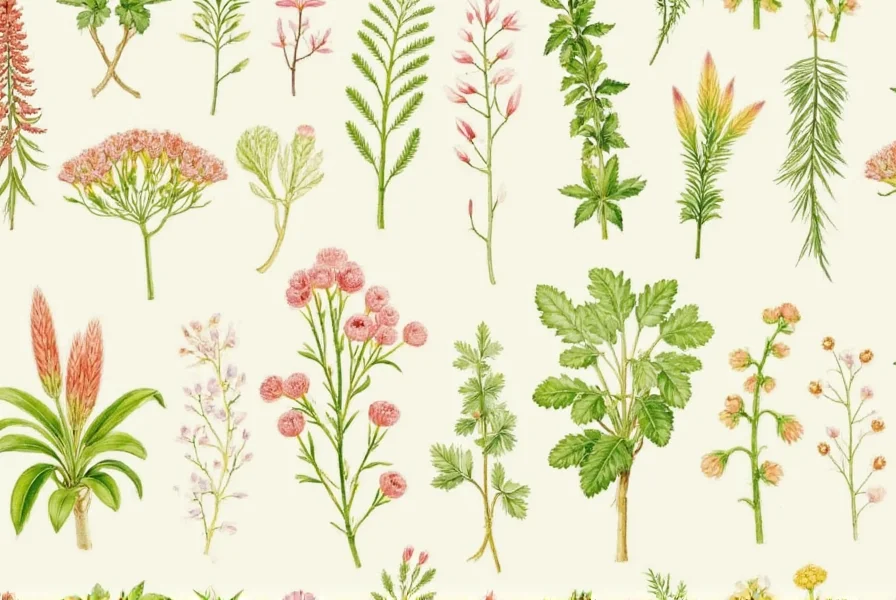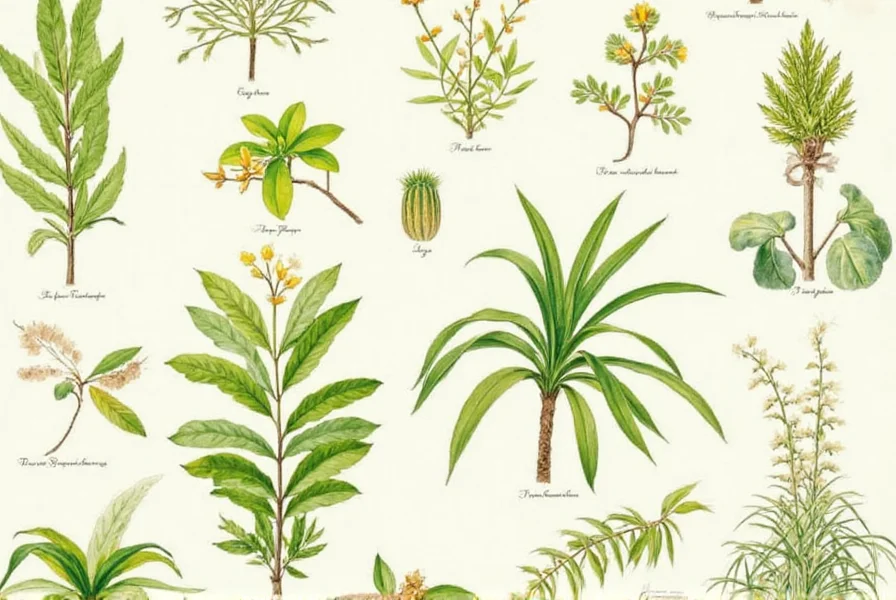Understanding which plants belong to the ginger family helps gardeners, chefs, and herbalists identify species with similar cultivation needs and beneficial properties. These plants share distinctive botanical features while offering unique culinary and medicinal applications across global traditions.
Botanical Classification of the Ginger Family
The Zingiberaceae family falls under the order Zingiberales in the monocotyledon group of flowering plants. This taxonomic family developed approximately 70-90 million years ago, evolving specialized adaptations for tropical environments. Unlike true roots, ginger family plants grow from rhizomes—horizontal underground stems that store nutrients and enable vegetative propagation.

Defining Characteristics of Zingiberaceae Plants
Members of the ginger family share several distinctive features that differentiate them from other plant families:
- Underground rhizomes with aromatic compounds
- Distichous leaf arrangement (leaves growing in two vertical rows)
- Pseudostems formed by tightly wrapped leaf sheaths
- Zygomorphic flowers with specialized petal structures
- High concentration of essential oils and bioactive compounds
These shared characteristics explain why plants in the ginger family often have similar cultivation requirements and pharmacological properties, despite their visual differences.
Major Plants Within the Ginger Family
While the Zingiberaceae family contains numerous genera, several species have gained worldwide importance for culinary, medicinal, and ornamental purposes.
| Plant | Scientific Name | Primary Uses | Key Compounds |
|---|---|---|---|
| Ginger | Zingiber officinale | Culinary spice, digestive aid | Gingerols, shogaols |
| Turmeric | Curcuma longa | Coloring agent, anti-inflammatory | Curcuminoids |
| Cardamom | Elettaria cardamomum | Flavoring, traditional medicine | Terpenes, cineole |
| Galangal | Alpinia galanga | Asian cuisine, digestive remedy | Galangin, kaempferide |
| Arrowroot | Maranta arundinacea | Thickening agent, digestive aid | Starch compounds |
Ginger (Zingiber officinale)
True ginger represents the namesake of the family, featuring reed-like stems reaching 2-3 feet tall with narrow green leaves. The rhizome contains gingerols responsible for its characteristic pungency and therapeutic properties. Ginger cultivation requires warm temperatures, high humidity, and well-draining soil with partial shade.
Turmeric (Curcuma longa)
Turmeric distinguishes itself with bright orange-yellow rhizomes containing curcumin, the compound responsible for its vibrant color and antioxidant properties. Unlike ginger, turmeric plants feature large, oblong leaves and white or yellow flowers. The plant requires similar growing conditions to ginger but with slightly longer growing seasons.
Cardamom (Elettaria cardamomum)
Often called the “Queen of Spices,” cardamom produces small, green or black seed pods rather than the typical rhizome structure. This shade-loving perennial grows best under forest canopies in tropical regions. Cardamom's distinctive flavor comes from terpene compounds, making it valuable in both sweet and savory applications worldwide.
Galangal (Alpinia galanga)
Galangal features a harder, paler rhizome with a sharper, more peppery flavor than ginger. Common in Southeast Asian cuisine, this plant grows taller than ginger with distinctive red flowers. Galangal contains different bioactive compounds like galangin, contributing to its unique medicinal profile.
Culinary Applications Across Cultures
Plants in the ginger family form the flavor foundation of many global cuisines. Indian cooking relies heavily on ginger and turmeric in curry preparations, while Southeast Asian dishes frequently feature galangal and lesser galangal. Scandinavian baking traditions incorporate ginger, and Middle Eastern cuisine uses cardamom extensively in both savory dishes and coffee preparations.
Medicinal Properties Supported by Research
Scientific studies have validated many traditional uses of ginger family plants. Ginger demonstrates effectiveness for nausea relief, particularly during pregnancy and chemotherapy. Turmeric's curcumin shows anti-inflammatory properties beneficial for joint health. Cardamom exhibits antimicrobial effects, while galangal contains compounds with potential anticancer properties. These applications stem from the shared biochemical pathways developed within the Zingiberaceae family.
Cultivation Requirements for Home Gardeners
Growing plants from the ginger family requires replicating their native tropical conditions. Most species need temperatures between 75-85°F (24-29°C), high humidity, and rich, well-draining soil. Plant rhizomes horizontally 2-4 inches deep after the last frost. While they prefer partial shade, some morning sun benefits growth. Container gardening works well for temperate climates, allowing plants to be brought indoors during colder months.

Common Misconceptions About Ginger Family Plants
Many people confuse members of the ginger family with unrelated plants. For example, African ginger (Siphonochilus aethiopicus) belongs to a different family (Musaceae), while wild ginger (Asarum europaeum) is in the birthwort family. True ginger family members always feature the distinctive floral structure and rhizome growth pattern characteristic of Zingiberaceae.
Maintaining Ginger Family Plants
Proper care ensures healthy growth and maximum flavor compound development. Water regularly but avoid waterlogging, which causes rhizome rot. Apply balanced fertilizer every 4-6 weeks during growing season. Most species become dormant during dry seasons, signaled by yellowing leaves—reduce watering during this period. Harvest rhizomes after 8-10 months when leaves begin to die back.
Conclusion
Understanding which plants belong to the ginger family reveals connections between seemingly different spices and herbs. The Zingiberaceae family's shared botanical heritage explains why these plants offer similar growing requirements while providing diverse culinary and medicinal benefits. By recognizing the distinctive features of each member, enthusiasts can better select, cultivate, and utilize these valuable plants according to their specific needs and applications.











 浙公网安备
33010002000092号
浙公网安备
33010002000092号 浙B2-20120091-4
浙B2-20120091-4